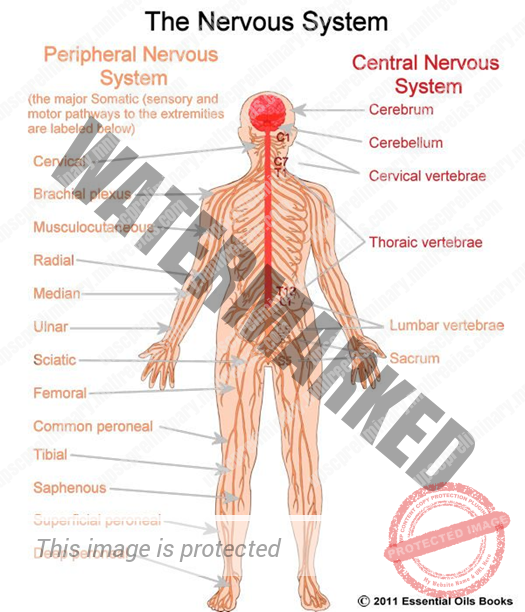- NERVOUS SYSTEM
UNIT 13 – HUMAN BODY – PART 5
NERVOUS SYSTEM: The voluntary and involuntary actions are maintained and taken care of by the central nervous system. It helps to channel the signals to and from different parts of our body.
Nervous System is broadly classified into two categories:
- Central Nervous System
- Peripheral Nervous System
Distribution of Nerves in humans (top) and the Neuron (bottom)
The central nervous system contains the brain and the spinal cord, while the peripheral nervous system includes nerves and ganglia that are present outside the brain and spinal cord. Through the axons, every part of the body gets connected.
Central Nervous System consists of:
- FOREBRAIN:It comprises the Cerebrum, Hypothalamus, And Thalamus. The largest part of the brain is the cerebrum. Thinking, Perceiving, controlling motor function, receiving and processing information and understanding language are the main functions done by this section of the brain. Also, sexual development and emotion functions are attached to the fore brain.
- MIDBRAIN:It is situated between The Hypothalamus and Thalamus. The brain stem is associated with the midbrain. Auditory And Visual responses are controlled by the mid-brain.
- HINDBRAIN:The Medulla, Pons, And Cerebellum are together, tied in the hindbrain. Interconnections of different parts of the brain’s surface that helps to accommodate neurons and connect them to the spinal column are done by the Hind brain.
Peripheral Nervous System consists of:
- SOMATIC NERVOUS SYSTEM:The system’s primary purpose is to transmit the motor and sensory impulses from CNS and back. It is linked to all the sensory organs, limbs and skeletal system. Imagine a scenario where you are riding a bicycle, and suddenly, you spot an obstacle (say a dog) on the road. Your ability to immediately swerve out of the obstacle’s path and avoid the crash is the result of the somatic nervous system taking action.
- AUTONOMIC NERVOUS SYSTEM:This system works without the person’s effort. The system helps to relay impulse from the central nervous system to smooth muscles and involuntary organs such as your heart, lungs etc. Also, it prepares the body against any violent attacks or abnormal conditions such as high body temperature during a fever or high rate of breathing and blood pressure after a strenuous exercise.
Every human being, tissues, human body parts and the organ systems are made up of cells- the fundamental unit of life.
ANATOMY is the science of understanding the structure and the parts of living organisms. Physiology, on the other hand, deals with the internal mechanisms and the processes that work towards sustaining life.
These can include biochemical and physical interactions between various factors and components in our body. With the progress of evolution, organisms began to exhibit advanced characteristics and features that enabled them to be more efficient and thrive in their respective environment.
The human structure can be described as bipedal, with hair covering the body, presence of mammary glands and a set of extremely well-developed sense organs. With respect to human body anatomy, we have a specialized circulatory system that enables the efficient transport of materials and nutrients within the body.
The presence of a well-developed digestive system helps to extract essential nutrients and minerals required by the body. A well-developed respiratory system ensures the efficient Gas Exchange and The Nervous System enables coordination and interaction within the body and also the external environment, thereby ensuring survival.

